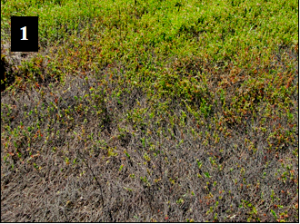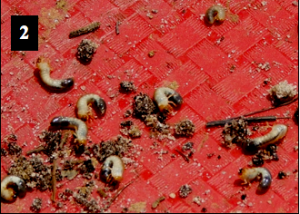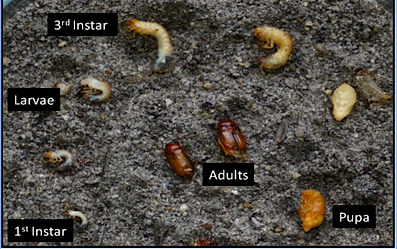Occurrence of root-feeding insects will manifest by the presence of dead patches. Pull dead vines and search through the root zone and soil for grubs and worms.
If your beds have damage caused by root-feeding insects, you should consider treatment with Imidacloprid (e.g. Admire Pro, Alias 4F, Alias 2F) immediately after bees are removed. Admire Pro (imidacloprid) is labeled for the control of cranberry rootworm, white grubs (Phyllophagaspp.), and other scarabs in cranberries.
White grubs, Phyllophaga spp.
There are several species of white grubs that infest cranberries in New Jersey, the most abundant being P. georgiana. Grubs are C-shaped and often found near bog margins. Adults are reddish brown and nocturnal. Grubs attack the cranberry roots; adults have not been reported to feed on cranberries. (See pictures of grubs and grub damage in cranberries).
The life cycles and abundance of white grub species in New Jersey is not well known. Most likely, Phyllophaga grubs have a 3-year life cycle (based on previous reports and my own observations). Eggs are laid in late-June and July, and will hatch in July. First instars can be found in late-July and August and turn into second instars by the end of August-September. The second instar grubs will overwinter. These grubs will feed the following year until June and molt to third instars, which will overwinter. The following year, the third instars will feed for some time and then begin to pupate in June. Pupation will take place in July-August. Adults will appear in the soil in August-September. Adults will remain in the soil and overwinter. They will emerge in June, mate, and begin to lay eggs, completing the cycle.





